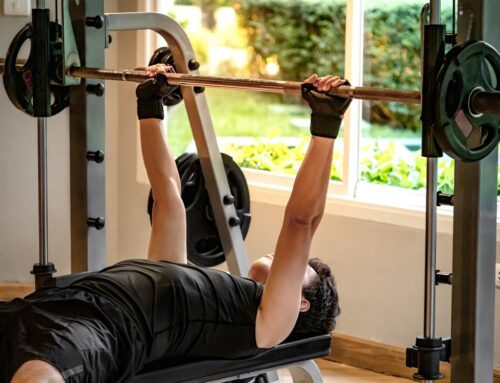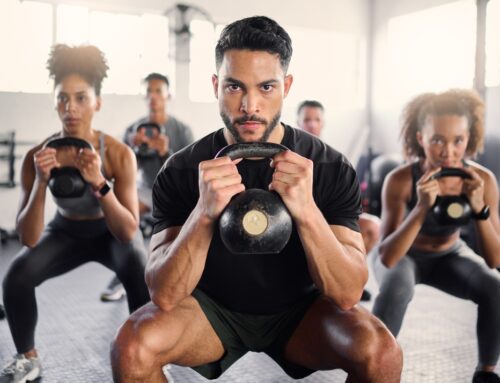Everyone obsesses over the perfect workout routine. What rarely gets the attention it deserves is the few minutes of warming up that should come before you ever touch a weight.
Most gym-goers treat a warm-up as optional. This isn’t only true for beginners. Experienced lifters are just as guilty. In fact, it’s often those who have been lifting the longest that assume they don’t need a warm-up other than warm-up sets.
Whether you’ve just started weight training and are still determining your goals or you have been pushing heavy weight for years, if you’ve been neglecting a proper warm-up, it’s time to make it an essential part of your workout routine.
Warming up before lifting weights has many benefits. Injury prevention is a big one, but there are many other advantages, including improved performance of that particular lift and how your body adapts over time, which can be the difference between average results and making the most of your training.
In this short but essential read, you will learn why warming up before your workout matters, what a proper warm-up consists of (spoiler: it’s more than warm-up sets), how to build an effective pre-lift warm-up routine, and common warm-up mistakes to avoid that could waste time and hold back your progress.
Why Warming Up Before Lifting Weights Matters
Warming up before lifting weights shouldn’t be skipped because it prepares your muscles, joints, and nervous system for the demands of strength training.
Training with cold, stiff muscles and tight joints leaves you vulnerable to injuries, poor movement patterns, joint discomfort, and reduced performance. It’s like stretching a frozen rubber band: it eventually snaps under stress.
A proper warm-up increases heart rate, raises muscle temperature, and improves blood flow, delivering more oxygen to working muscles. This makes them more flexible, more responsive, and less likely to tear under heavy loads.
Just as important, warm-ups lubricate your joints with synovial fluid, which reduces friction, improves range of motion, and protects cartilage from wear and tear under stress.
The Benefits of Priming Your Body for Strength Training
The primary reason a workout warm-up is essential is to prevent injury. Cold, stiff muscles and unprepared joints are far more likely to strain or tear under heavy load.
Taking a few minutes to raise muscle temperature, improve circulation, and move through lighter versions of the exercises ahead dramatically reduces that risk. However, the benefits of warming up before lifting weights go far beyond injury prevention.
A good warm-up also:
- Improves mobility and flexibility, allowing you to reach deeper ranges of motion and target the right muscles more effectively.
- Activates key muscles so they fire correctly, strengthening your mind-muscle connection.
- Primes the central nervous system (CNS) for coordination, speed, and stronger lifts.
- Lubricates your joints with synovial fluid, which reduces friction and helps protect cartilage.
- Builds gradual adaptation so your body is ready to handle higher intensity over time.
- Provides mental focus by allowing you to lock in on the session before the heavy sets begin.
- Maximizes long-term progress by helping you lift more efficiently and recover better, so you reach your strength and physique goals faster.
Whether you are a beginner learning proper form or an experienced lifter hoping to hit PRs, your warm-up sets the tone for every rep that follows. It is one of the most overlooked and underestimated parts of training, yet one of the simplest ways to lift stronger, safer, and smarter.
Even better, a solid pre-lift warm-up not only pays off during the workout itself, but it also compounds over time by protecting your joints, improving movement quality, and helping you get better results from the effort you put in at the gym.
Types of Warm-Up Exercises
The main types of warm-up exercises are dynamic stretching, mobility work, muscle activation drills, cardiovascular warm-ups, and warm-up sets. Each helps prepare your joints, muscles, and nervous system for strength training in slightly different ways.
That’s why the best lifters know an effective warm-up doesn’t start by walking straight to the squat rack or bench press and cranking out a light warm-up set. A proper warm-up should also include other warm-up techniques performed before you ever touch a weight.
Yes, doing one or two warm-up sets is an essential element of preparing your muscles for a big lift. We’ll cover warm-up sets in detail later, including who benefits most from warm-up sets and when you might be able to skip them.
But there is more to an effective warm-up than warm-up sets alone. There are four other warm-up exercises that every lifter, from beginners to seasoned athletes, should take a few minutes to complete before moving into warm-up sets. Each serves a unique purpose in priming your body for weight training.
Dynamic Stretching
Dynamic stretching isn’t holding a stretch; it’s stretching with movement that warms up joints and muscles through controlled ranges to prepare them for activity. This type of stretching increases blood flow, raises body temperature, reduces stiffness, and enhances coordination.
You don’t hold positions during dynamic stretching; that’s static stretching, which is best for yoga classes or after your workout or a separate recovery session.
Dynamic stretching involves continuous movement and is one of the most effective ways to wake up your muscles before lifting weights. It primes the exact ranges of motion you will use under load so your lifts feel smoother and safer.
Examples of dynamic stretches before lifting weights include:
- Joint circles (arms, hips, ankles, wrists)
- Leg swings
- Walking knee pulls
- Walking lunges with rotation
- Arm huggers
- Arm swings across the body
- Dynamic chest openers
- Overhead reach and stretch
- Torso twists
- Inchworms
- Cat-cow or downward dog flows
The dynamic stretches you choose should align with the muscle group you plan to train that day.
For example, leg swings and hip openers are great on leg day, but they are not essential on an upper body day. On those days, you’d want to prioritize movements that open up the joints and activate the muscles you will actually use for that session, such as arm circles and shoulder rolls.
Stretching is a key component of any fitness routine; just make sure you are doing the correct type of stretching at the right time.
Mobility Drills
Mobility drills focus on joint health and controlled range of motion. Instead of just warming up tissue, the goal is to help develop strength, coordination, and control within the full range of motion of a joint to improve the stability and efficiency in your lifts.
Mobility drills are especially helpful if you spend a lot of time sitting or have tight hips, shoulders, or ankles, which are all common problem areas for lifters.
Examples of mobility drills before lifting include:
- Shoulder dislocates
- Thoracic rotations
- Thread the needle
- Deep walking lunges with an arm raise and rotation
- Light foam rolling and myofascial compression
Mobility drills might sound similar to dynamic stretching and often have overlapping exercises, but they aren’t exactly the same.
Dynamic stretching is a movement-based stretching technique that warms up the body, increases blood flow, and prepares muscles for activity by enhancing flexibility and range of motion. Mobility drills, which often include elements of dynamic stretching, focus on moving a joint or series of joints through a range of motion in a slow and controlled manner.
Essentially, dynamic stretches are movement patterns that actively warm and stretch muscle tissue, and mobility drills are controlled movements that improve the overall health and function of the joint and its surrounding tissues.
Mobility work also shares a similar goal with functional training, which is a style of training that helps your body move efficiently in ways that carry over beyond the gym. If you’d like to learn more about this often overlooked but very beneficial training style, check out “The Importance of Functional Training in Everyday Life.”
Muscle Activation
Muscle activation drills are very low-load, controlled exercises that target the muscle group and stabilizer muscles that will be used in your upcoming lift. The goal of muscle activation exercises is to wake up these muscles so they fire better instead of letting stronger groups compensate.
Activation drills also strengthen the mind-muscle connection, helping you lift with better form, control, and power.
Muscle activation warm-ups can use only bodyweight, but often include light resistance bands. Examples of muscle activation drills include:
- Air squats
- Glute bridges
- Good mornings
- Lateral band walks
- Scapular push-ups
- Band pull-aparts
Lightly firing the exact muscles you are about to train increases blood flow and helps re-establish the communication pathway between your brain and the specific muscle you are about to train.
Essentially, you’re telling both your body and brain that it’s time to “get to work”. Even a few minutes of activation exercises can make a big difference in strength and mind-muscle connection.
Cardiovascular Warm-Up
A short walk on the treadmill or elliptical before arm day, or a few minutes on the stepmill or bike before legs, helps elevate heart rate, increase circulation, and get oxygen flowing to your muscles. It does not have to be long; five minutes is plenty of time to activate your system.
If you need to skip a step in the warm-up routine, this is the one you can scale back or omit altogether. However, it is useful if you are coming straight from a desk job or have been sitting in a car for a while, especially during the winter when it’s cold outside, or even in the summer if your gym blasts the AC a little too high.
Cardo is also great for getting your head in the right place. Sometimes it can be hard to find the motivation to get started. Those few minutes let you shake off distractions and mentally switch from everyday life into training mode.
Sample Weightlifting Warm-Up Routine
When creating an effective warm-up before strength training, the goal is to choose movements that prepare your muscles and joints for the work ahead. Each warm-up will look a little different, depending on your training plan, the muscle groups you’re working, and even the amount of time you have for your warm-up, as well as how your body feels that day.
To help you see how the pieces fit together, here’s an example of a short, effective warm-up routine before lifting weights that combines dynamic stretching, mobility, muscle activation, and a cardio warm-up that can be completed in under 10 minutes.
- Cardiovascular Warm-Up (2–3 minutes): Walk on the treadmill, step slowly on the stairmater, or get some arm and leg movement on an elliptical. Go at an easy pace. Your primary goal when warming up for your lift with cardio is to gently elevate your heart rate, increase blood flow to your muscles, and mentally prepare for the lift ahead.
- Dynamic Stretching (3–4 minutes): Pick a couple of dynamic stretches that match the region of the body you are going to train. On an upper body day, that might be 30 seconds each of arm circles, arm swings, and chest openers. For a lower body day, a few seconds each of leg swings, walking knee pulls, and hip circles.
- Mobility Drills (2–3 minutes): It doesn’t take long to prep your joints and surrounding tissues. Like dynamic stretching, focus on the region of the body you’ll be training. That might include a set of cat-cow or downward dog stretches, shoulder dislocates or deep lunges with reach and rotation, or even just some strategic foam rolling and myofascial release.
- Muscle Activation (2–3 minutes): The final step is to lightly “fire” the stabilizing muscles you are about to hit with heavier weight. This could be very light lateral band walks, bodyweight or banded squats, and a few glute bridges on lower body day. Or, a few scapular push-ups and band pull-aparts on upper body day.
On days when time is extremely limited, you can shorten each section before moving into your warm-up sets. Even a minute of dynamic stretching, mobility drills, and muscle activation can yield significant benefits in performance and injury prevention.
What if I Don’t Have Enough Time for a Warm-Up Before Lifting Weights?
If you are considering skipping a warm-up due to time constraints, it’s best to have a “something is better than nothing” mindset.
For example, instead of 3-5 minutes each of dynamic stretching, mobility drills, and muscle activation, drop it down to 1 minute for each. You could even “multi-task” and do some dynamic movements while “walking” over the equipment you are about to use, and jump straight into your warm-up sets.
We’ll discuss the importance of warm-up sets in a moment, but if time is short, at the very least, do one warm-up set for the first exercise of each muscle group you train with resistance. Even one warm-up set that eases your muscles and joints into heavier weight can go a long way in helping your body adjust before heavier lifts and reducing injury risk.
Bottom Line
You don’t necessarily need to complete all four warm-up exercises before your lift plus warm-up sets. It depends on the type of workout you are doing, how heavy you plan to train, and how prepared your body feels. The key is to include at least one or two of these warm-up exercises before you hit the gym floor and load the bar.
What About Using the Sauna or Cold Plunge Tub Before a Workout?
Sauna and cold plunge are excellent tools for post-workout recovery and overall wellness. However, they aren’t generally a good idea before lifting weights.
Using a sauna before a workout can dehydrate you and raise your body temperature in a passive way that doesn’t prepare your body for the demands of strength training.
A cold plunge, while great for mental alertness, can temporarily tighten muscles and reduce performance if done immediately before lifting.
We’ll explain this in more detail a little further down when we cover some common warm-up mistakes that can work against your training results.
How Long Should I Warm Up Before Lifting?
Your warm-up before strength training should never come close to feeling like an actual workout. The goal of a warm-up before weightlifting is to prepare your body so you can train harder and more safely, not to tax it.
Most lifters only need 5 to 10 minutes to complete an effective warm-up before lifting weights. For heavy lifting days, compound movements like squats or deadlifts, or if you are dealing with mobility issues, your warm-up might take closer to 15 to 20 minutes.
We know it might seem like a warm-up will add a lot of time to your training session, but you don’t need to complete every single warm-up exercise or do a dozen different dynamic stretches and mobility drills. A smart warm-up can be (and should be) short, efficient, and tailored to the training session ahead.
Once you have gone through the warm-up exercises that you feel will benefit your weightlifting session the most and work best for warming up your body, it’s time to finish your preparation with the final step before your working weight: warm-up sets.
What Are Warm-Up Sets?
Warm-up sets are lighter sets done with sub-maximal weight. In other words, you lift a weight that is far below what you plan to use for your main working sets. The goal is not to fatigue your muscles but to gradually acclimate them, along with your joints and central nervous system, for the heavier working sets.
While we don’t recommend skipping other warm-up methods before lifting, as they serve different yet important purposes, in most cases, you should always perform at least one warm-up set before starting your working sets with heavier weight.
When used correctly, warm-up sets become one of the most valuable tools in strength training, helping you:
- Reinforce proper technique and form with lighter loads
- Increase joint lubrication and stability under load
- Improve confidence and mental focus before heavy sets
- Give your central nervous system a chance to “rehearse” the movement pattern
You can skip a short cardiovascular warm-up before your lift if necessary, but never jump straight into big, heavy lifts without warm-up sets, unless you want to get injured or hinder performance.
Do I Need To Do Warm-Up Sets for Every Exercise?
In most cases, you don’t need warm-up sets for every single exercise you are doing that day.
Warm-up sets are typically only needed for your primary, heavy, or technical compound lifts. For isolation and lighter-load exercises that follow, you can often skip dedicated warm-up sets and jump straight into your working sets.
For example, on leg day, you’ll want to perform warm-up sets for squats and deadlifts. The lighter-load exercises that follow (leg extensions, hamstring curls, glute kickbacks, calf raises) don’t typically need warm-up sets because your muscles are already warm and activated from your compound lifts.
To learn more about the difference between compound lifts and isolation exercises, read “Compound vs. Isolation Movements: Which is Right for You?”
When to Prioritize Warm-Up Sets
Warming up your muscles and joints is always necessary, but there are times when your body needs more than a few leg swings, arm circles, or band pull-aparts.
Warm-up sets are especially important in these scenarios:
- Main, heavy, or technical compound lifts: Big multi-joint lifts like squats, deadlifts, bench press, overhead press, and rows should always include warm-up sets. These movements demand coordination, stability, and joint control, even if you aren’t pushing extremely heavy weight.
- Your first exercise: If you aren’t performing one of the “big lifts” mentioned above beforehand, you should typically perform at least one warm-up set for the first exercise of each muscle group you plan to train. For example, if you’re training your biceps and triceps, ensure that each of your initial bicep and tricep exercises has a warm-up set.
- Program changes or new lifts: When you switch up exercises, grip styles, or even the equipment used, this presents a new stimulus that your muscles and joints aren’t accustomed to. Warm-up sets provide an opportunity to perfect your form and allow for a gradual adaptation to ensure safe progress.
- Stiff or unprepared days: If you feel more sore, rigid, or off than usual, always do a few extra warm-up sets to better assess your readiness and reduce the risk of injury.
- Beginners: If you’re a beginner new to strength training, warm-up sets serve many important purposes. They help you practice good form, find your proper weight and rep range, and build confidence before attempting to lift heavier.
When it Might Be Okay to Skip Warm-Up Sets
You should always listen to your body, but there are some instances when you can often skip warm-up sets and head straight into working sets.
You can likely skip a series of warm-up sets in these scenarios:
- Isolation exercises: Exercises like bicep curls, tricep extensions, lateral raises, leg extensions, and chest flys target a single muscle, involving the movement of only one joint. They use much lighter loads and are usually performed after compound lifts, so your muscles should already be sufficiently warmed up from those exercises.
- Bodyweight movements: Exercises using only bodyweight don’t require a warm-up set because no resistance is involved (unless you are adding bands). For bodyweight training, all you need is a little bit of dynamic stretching and mobility drills to increase blood flow and activate muscles.
- Low-intensity training: When you’re training with resistance but the load is light, which is common in full-body lifts that target all major muscles, a long progression of warm-up sets isn’t usually needed. That said, you don’t want completely unprepared muscles and joints, so at least do a few dynamic stretches, mobility drills, and muscle activation exercises.
- Cardio-only sessions: If your gym session consists of only low to moderate intensity cardio, such as the stepmill or treadmill, warm-up sets don’t apply because you aren’t going to be lifting weights. The exception here is high-intensity cardio such as HIIT, which demands a proper warm-up to activate your muscles and protect your joints from injury.
- Group fitness classes: One benefit of group fitness classes is that both a warm-up and cool-down are already planned into class time. There’s no need to do any additional warm-up before you arrive! To learn more about group fitness training, read “Group Fitness Classes: Why Working Out Together Works.”
How to Structure Your Warm-Up Sets
There are different approaches to warm-up sets, based on your training style, goals, and the intensity of your working sets.
Not everyone needs a long series of warm-up sets. If your workout is low or moderate intensity, doesn’t include any compound exercises, or you aren’t lifting extremely heavy, a single light warm-up set is probably sufficient before progressing to working sets.
On the other hand, when lifting heavy, it may be smart to do several warm-up sets using a more gradual progression, where the weight increases and the reps decrease. For example, if your target working set for squats is 225 lb for five reps, your warm-up might look like:
- Empty bar: 10–15 reps (focus on form)
- 95 lb: 8–10 reps
- 135 lb: 5–6 reps
- 185 lb: 2–3 reps
Whatever pattern you choose, remember the goal of warm-up sets is not to fatigue you, but to prepare you. Listen to your body and adjust rep schemes or weight jumps accordingly.
Common Mistakes to Avoid When Warming Up Before Weight Lifting
While many lifters fall into the trap of skipping warm-ups entirely, which is the biggest mistake you can make, there are others who do things that feel helpful but actually hurt their performance.
Here are the most common mistakes to avoid when warming up before lifting weights:
- Only doing warm-up sets: Jumping straight into a heavy lift with weights, even if you plan to “pyramid up” in weight, can still leave your muscles, joints, and nervous system unprepared. This increases the risk of injury and usually makes your first sets feel stiffer and weaker.
- Static stretching before lifting: Holding poses for more than a few seconds relaxes muscles, which can temporarily reduce power output. Save static stretching for after your session or on recovery days, and focus on dynamic stretching that involves movement and short holds before strength training.
- Overdoing foam rolling or myofascial release: A quick roll or a few targeted compression exercises, done correctly, are okay before strength training. In fact, they are often the most effective way to loosen exceptionally tight areas. Just don’t overdo it. Grinding away for more than a few seconds can fatigue muscles and reduce their responsiveness.
- Cold plunge before lifting: Cold plunging has numerous benefits for the body, but it’s not typically recommended as a pre-lift warm-up. Cold therapy constricts blood vessels and dulls neural drive, which can temporarily reduce flexibility, strength, and power. Save the cold plunge for after your workout, on rest days, or as part of a morning routine if you lift later in the day.
- Sauna before training: Sauna sessions are great for recovery, but using a sauna before lifting weights isn’t typically a good idea. Excessive sweating can dehydrate you, and the heat may leave you feeling drained instead of energized. The best time for the sauna is post-workout, when increased circulation can help promote muscle recovery.
- High-intensity or long cardio sessions: Save any type of high-intensity cardio for post-lift or non-training days. Running for 20 minutes, HIIT sessions, or any other activity that pushes your heart rate anywhere near the red zone before lifting will drain you of the energy you need to lift. If you’re going to do a cardio warm-up, stick with low-intensity cardio that only slightly elevates your heart rate.
- Counting warm-up sets as working sets: Warm-up sets don’t count toward your programmed volume. For example, if your plan calls for four sets of 10–15 reps, each set should be performed at your working weight. Any lighter sets you complete beforehand are for preparation only to prime your muscles and nervous system, but they aren’t part of the workload that drives strength or hypertrophy gains.
FAQs About Warming Up Before Lifting Weights
What’s the difference between a warm-up set and a warm-up?
A warm-up is a general term for any type of movement that prepares your body for training. This includes dynamic stretching, mobility drills, bodyweight or banded muscle activation exercises, low-intensity cardio, and warm-up sets.
A warm-up set is a type of warm-up that consists of a lighter “practice set” performed immediately before your working sets to gradually load your body before heavier work.
An easy way to understand the difference between warm-up sets and other warm-up exercises is that warm-ups, such as dynamic stretching, mobility drills, and muscle activation exercises, prepare your muscles and joints to move effectively. Warm-up sets prepare and ease your body into the exact lift you are about to perform.
Can warming up improve muscle growth, or is it only for injury prevention?
While injury prevention is a key benefit, warming up can also improve long-term gains. A good warm-up activates the right muscles, sharpens the mind-muscle connection, and lets you train through a fuller range of motion. That combination leads to better technique and stronger contractions, which are two key factors that directly support hypertrophy.
Is foam rolling part of a warm-up or recovery?
It can be both. A quick 1–2 minutes of foam rolling and compression drills before lifting can loosen tight spots and make dynamic stretches more effective. However, longer, more aggressive sessions are better saved for post-workout recovery.
How many warm-up sets should a beginner do?
Beginners typically only need one or two warm-up sets before their working sets. The purpose is to practice form, build confidence, and ease the body into heavier loads. As weights get heavier or exercises become more technical, additional warm-up sets may be needed.
Do warm-ups need to change as you get older?
As you age, joint issues become more common and your muscles also take longer to loosen up. Dynamic stretches, mobility drills, and lighter warm-up sets become even more important to reduce stiffness and prevent injury. A warm-up that’s only 5 minutes in your 20s might need to be closer to 10–15 minutes in your 40s or 50s.
Can warm-up sets always reduce injury risk when lifting heavy?
Injuries while lifting weights are always possible. Many things can contribute to gym injuries. However, warm-up sets help your muscles, joints, and nervous system adapt to heavier loads, reducing stiffness and improving control, which in turn lowers the risk of strains and poor form, especially on compound lifts.
Can I skip warm-up sets for accessory and isolation exercises?
Sometimes! If isolation exercises, such as bicep curls, lateral raises, or tricep extensions, follow compound exercises, a warm-up set is probably unnecessary since your muscles and joints should already be sufficiently warmed up. However, if you are only doing accessory or isolation work, in most cases, you should do at least one warm-up set before starting your working sets.
Will doing cardio before weights reduce strength performance?
Short, low-intensity cardio warm-ups can boost circulation without hurting performance. However, performing long or intense cardio before lifting can fatigue muscles and reduce your strength for heavier lifts.
What is a good ramp-up scheme for warm-up sets?
A simple method is to decrease reps as you increase weight. For example, start with only a barbell for 10–15 reps. Then, for the following sets, aim for 50% of your working weight for 6–8 reps, 70% for 3–5 reps, and 80–85% for 1–3 reps before moving into your working sets.
How does a warm-up set prime your nervous system?
Each warm-up set gives your central nervous system a rehearsal of the movement. This improves coordination, firing patterns, and overall mind-muscle connection, leaving you feeling more stable and explosive during heavy lifts.
Is it bad to get in the sauna or cold plunge before a workout?
Sauna and cold plunge can be beneficial before a workout in some instances. However, they are typically best reserved for post-workout recovery. A sauna session can dehydrate and fatigue you, while a cold plunge can temporarily reduce power and flexibility.
Is a warm-up before lifting or a cool-down after lifting more important?
Both a warm-up and a cool-down are equally important, just for different reasons. A warm-up prepares your body for the workout, reducing the risk of injury and enhancing performance. Post-workout recovery is essential for repairing and strengthening muscles to support future growth. A well-rounded lifting routine includes both proper preparation and diligent recovery to maximize the benefits of your lift, prevent injury, and ensure long-term progress.
Conclusion
Skipping your warm-up might save you five minutes, but over time, it will cost you in terms of performance, recovery, and progress.
Warming up before lifting weights is the foundation for safer, stronger, and more productive training. From dynamic stretches and mobility drills to muscle activation and warm-up sets, each step primes your body and nervous system to perform at its best.
We hope this guide will help you create your own warm-up routine, but if you’re still unsure about the type of warm-up that’s best for you, consider hiring a personal trainer.
There are many benefits of having a personal trainer to go beyond creating programs for muscle gain and fat loss. A good trainer will also guide you through a personalized warm-up and post-workout recovery routine tailored to your training style and body’s unique needs.
Whether you’re looking to hire personal trainer to guide you, searching for a new gym to lift weights in Nashville, TN, just down the road in Franklin, TN, or at one of our soon-to-open Carbon Performance locations in Atlanta or Charleston, our exclusive gym and nutrition facilities provide a one-stop destination for every aspect of your training, including everything you need for a proper warm-up.
We have dedicated cardio zones and specialized spaces (including turf areas) with plenty of room for your dynamic warm-up, stretching, and mobility drills. Then, when it is time to lift, there is no shortage of cutting-edge equipment.
You’ll also want to save a little time for recovery, which is just as important as your warm-up.
The recovery lounge at Carbon Performance has everything you need to recharge, and our shake bar offers a variety of post-workout nutrition options, including protein shakes and macro-friendly meals.
Ready to take your training to the next level? Visit a Carbon Performance near you to tour our facilities and discover for yourself how joining the right gym can transform the way you train and the results that follow.






